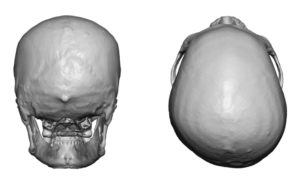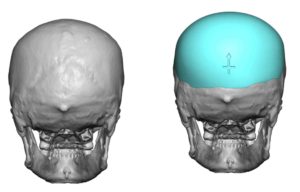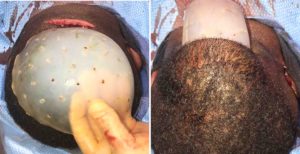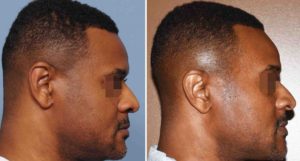Background: The back of the head is exposed to numerous deforming forces both in utero as well as after birth. Given that laying on the back of the head is necessary to some degree in many non-vertical positions, the early influences of positioning in utero and early in the first year of life on soft and thin cranial bones can make for an occipital plagiocephaly type skull deformity.
While helmet therapy can really help the plagiocephalic patient early on, once the bone thickens the skull shape is locked in for all time. Its degree of severity will determine whether it is a largely isolated asymmetry to the back of the head or has obvious manifestations that extend to the forehead, face and ears.
Heretofore, correction of occipital plagicephay is adults has been viewed as untreatable or unimportant enough that surgery was not ‘warranted’. And when viewed as changing the shape of the bone through osteotomies and repositioning, that would certainly be true. But to those so affected, a treatment that would be effective without all the risks of actual skull bone surgery would be welcome.




Case Highlights:
1) Contour deformities of the back of the head are common are often asymmetric in shape.
2) While occipital plagiocephalies are often viewed as flatness on one side of the head, a more complete correction often requires crossing the midline.
3) A discrete and limited scalp incision is one of the important goals of occipital plagiocephaly correction with a custom skull implant.
Dr. Barry Eppley
Indianapolis, Indiana



